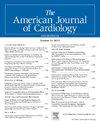指导二尖瓣严重狭窄伴广泛二尖瓣环钙化的早期治疗:1例经间隔ViMAC病例。
IF 2.1
3区 医学
Q2 CARDIAC & CARDIOVASCULAR SYSTEMS
引用次数: 0
摘要
二尖瓣环形钙化(MAC)相关的二尖瓣狭窄(MS)提出了重大的治疗挑战,特别是在被认为是高风险或不能手术的患者中。经导管二尖瓣置换术(TMVR)已成为一种替代方法,但由于解剖学的复杂性和并发症的风险,该手术在技术上仍然要求很高。我们报告一位患有严重MAC和MS的72岁男性患者,使用29 mm Edwards Sapien 3瓣膜成功行TMVR。在这种情况下,一个关键的创新是采用了一种新颖的气球辅助可跟踪性评估,以优化输送系统的轨迹。在鼻中隔造口术之前,一个不兼容的球囊被定位并在二尖瓣水平充气,能够实时评估同轴对准并确认沿预定路径推进假体的可行性。一旦确定最佳轨迹,使用相同的球囊进行中隔造口,确保输送系统的准确和可控通过,最终促进精确植入。在3年的随访中,患者无症状,瓣膜功能良好,血流动力学稳定。本病例强调了鼻中隔造口前球囊追踪性评估作为一种简单而高效的技术的价值,可提高MAC TMVR的手术精度。本文章由计算机程序翻译,如有差异,请以英文原文为准。
Guiding Early Management in Severe Mitral Stenosis with Extensive Mitral Annular Calcification: A Transseptal ViMAC Case
Mitral annular calcification (MAC) related mitral stenosis (MS) presents a significant therapeutic challenge, especially in patients considered high-risk or inoperable. Transcatheter mitral valve replacement (TMVR) has emerged as an alternative, but the procedure remains technically demanding due to anatomical complexities and the risk of complications. We report the case of a 72-year-old man with severe MAC and MS, who successfully underwent TMVR using a 29 mm Edwards Sapien 3 valve. A key innovation in this case was the implementation of a novel balloon-assisted trackability assessment to optimize the trajectory of the delivery system. Prior to septostomy, a noncompliant balloon was positioned and inflated at the mitral level, enabling real-time evaluation of coaxial alignment and confirming the feasibility of advancing the prosthesis along the intended path. Once optimal trajectory was verified, the same balloon was used to perform the septostomy, ensuring accurate and controlled passage of the delivery system, and ultimately facilitating precise implantation. At 3-year follow-up, the patient remained asymptomatic with a well-functioning valve and stable hemodynamics. This case highlights the value of preseptostomy balloon-based trackability assessment as a simple yet highly effective technique to enhance procedural precision in TMVR for MAC.
求助全文
通过发布文献求助,成功后即可免费获取论文全文。
去求助
来源期刊

American Journal of Cardiology
医学-心血管系统
CiteScore
4.00
自引率
3.60%
发文量
698
审稿时长
33 days
期刊介绍:
Published 24 times a year, The American Journal of Cardiology® is an independent journal designed for cardiovascular disease specialists and internists with a subspecialty in cardiology throughout the world. AJC is an independent, scientific, peer-reviewed journal of original articles that focus on the practical, clinical approach to the diagnosis and treatment of cardiovascular disease. AJC has one of the fastest acceptance to publication times in Cardiology. Features report on systemic hypertension, methodology, drugs, pacing, arrhythmia, preventive cardiology, congestive heart failure, valvular heart disease, congenital heart disease, and cardiomyopathy. Also included are editorials, readers'' comments, and symposia.
 求助内容:
求助内容: 应助结果提醒方式:
应助结果提醒方式:


